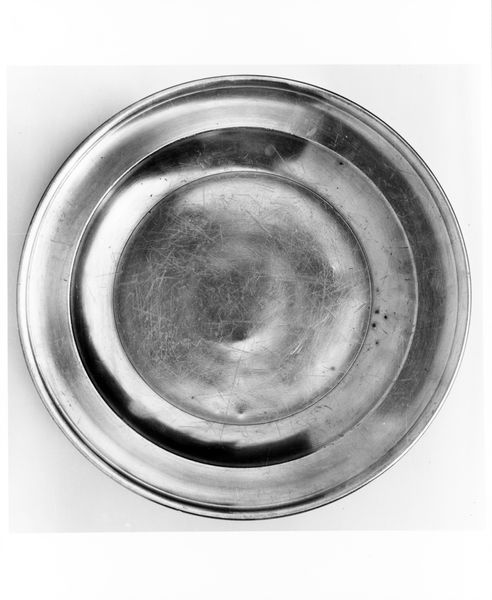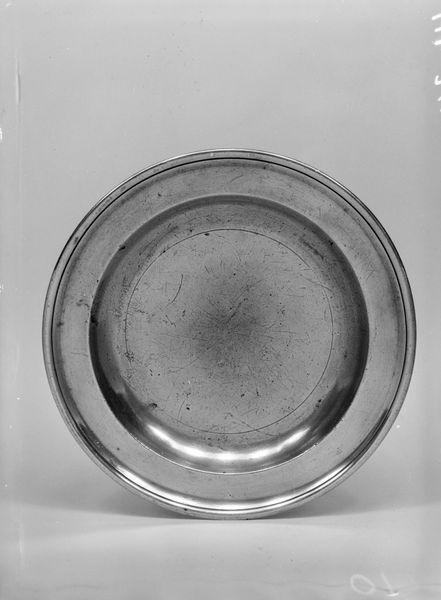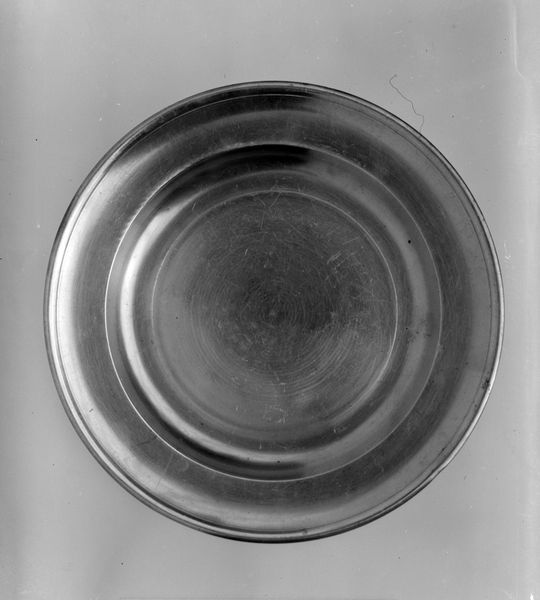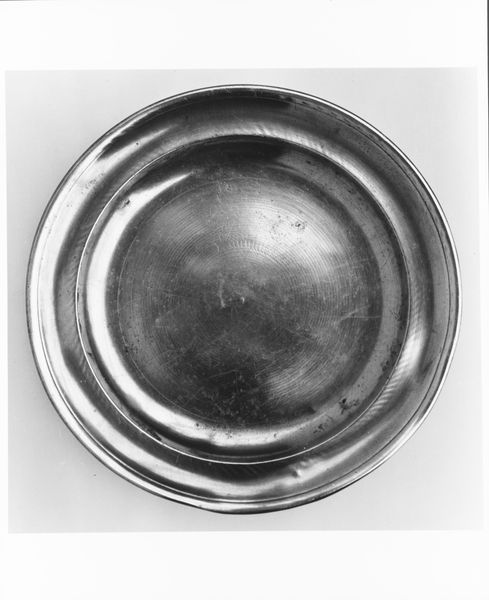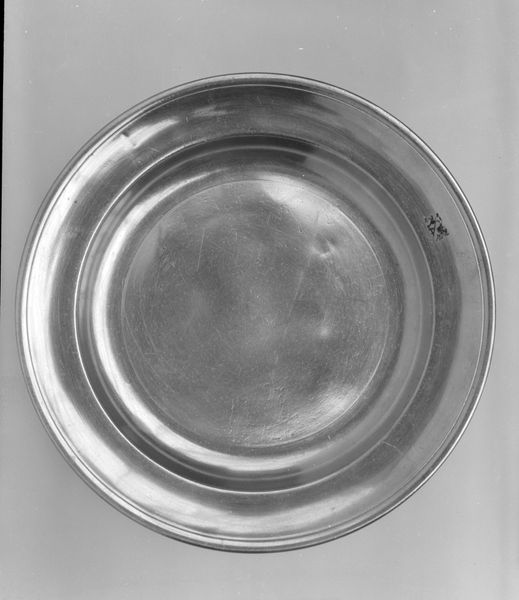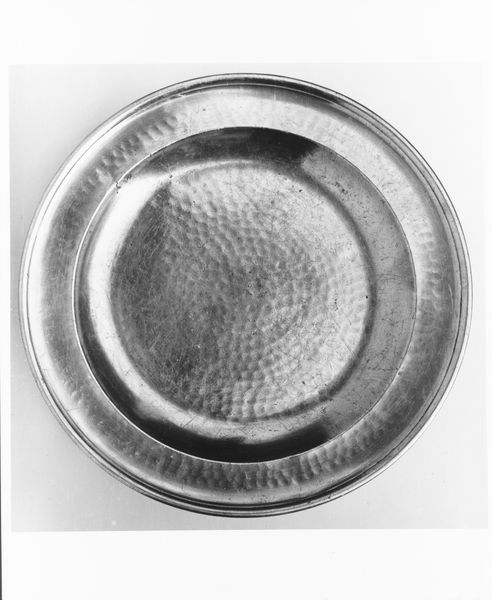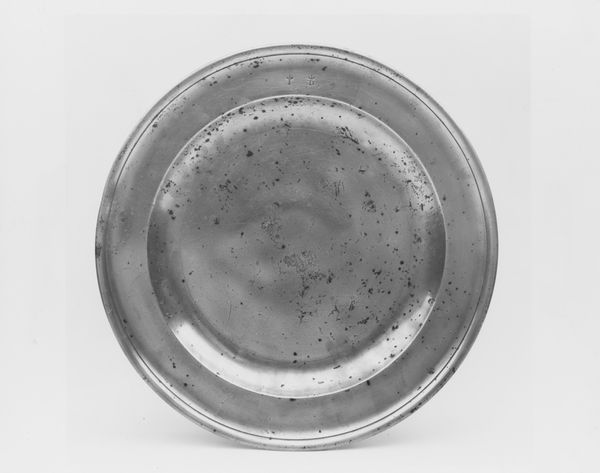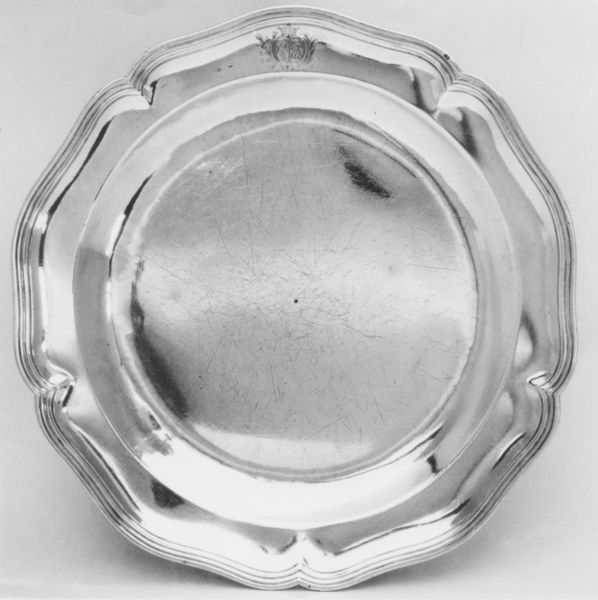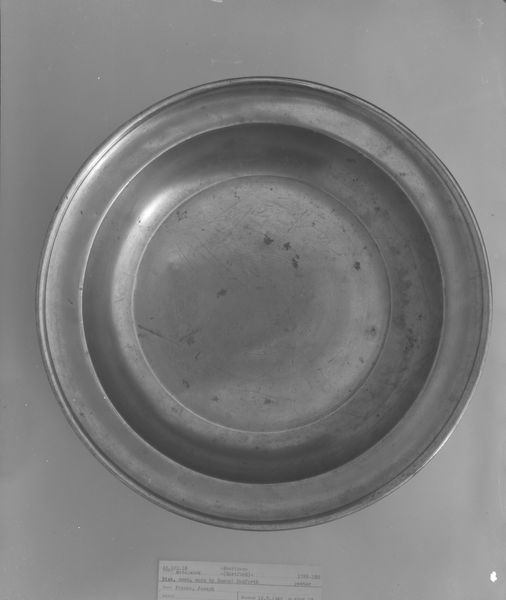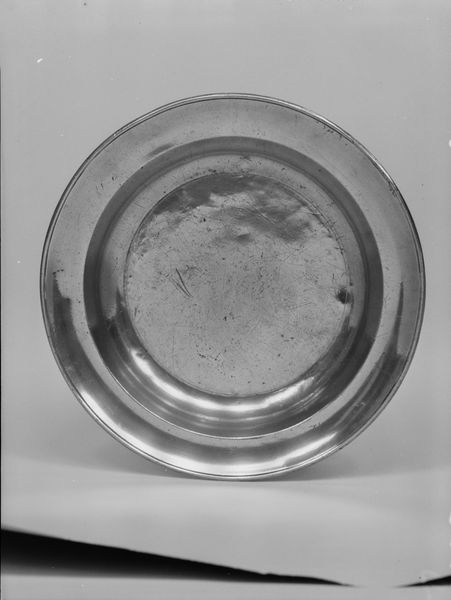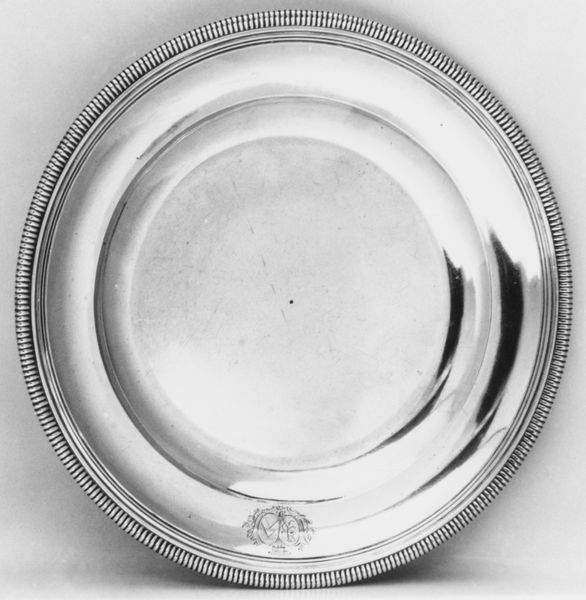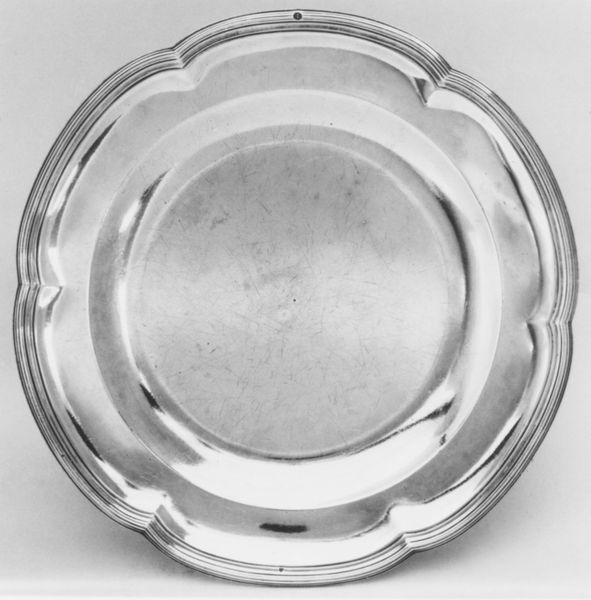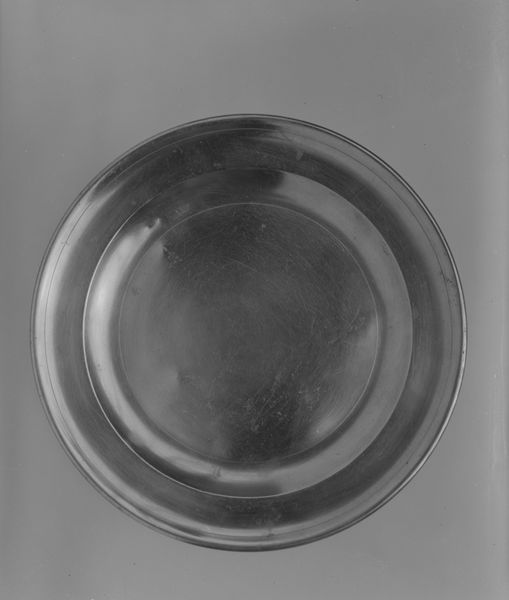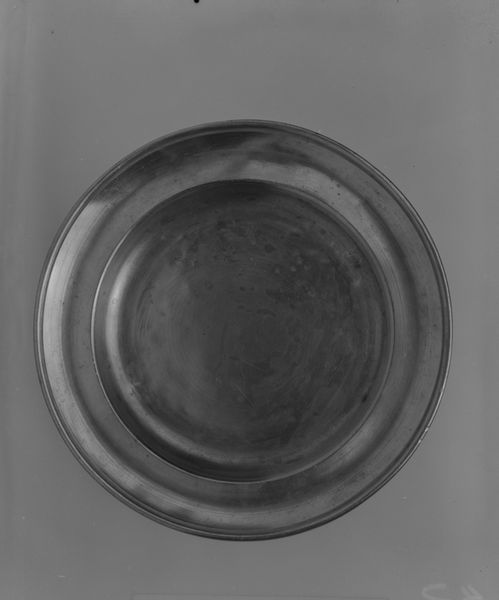
metal, photography
#
metal
#
photography
Dimensions: H. 3/4 in. (1.9 cm); Diam. 6 1/8 in. (15.6 cm)
Copyright: Public Domain
Editor: Here we have "Saucer" crafted sometime between 1777 and 1818 by Thomas Danforth, III. It appears to be metal, and what strikes me most are the visible concentric lines suggesting the tool used to make it. How would you interpret this seemingly simple object? Curator: For me, this isn't just a saucer; it's a record of labor. Look at the precision of those lines – the maker, Danforth, intentionally or unintentionally memorialized the production process itself. We can trace the tool's movement, the pressure applied, almost sense the rhythm of its making. Editor: So, the means of production becomes the art itself? Curator: Precisely. Forget high art for a moment. What's compelling is that this mass-produced object—given the time, likely intended for wider consumption— inadvertently carries within it the trace of human action. It challenges that high/low art divide. Editor: So the material, its use, its very construction, speak volumes about its cultural place at the time. Curator: Exactly. What materials were available? What trade networks sustained their import? How did class shape the function of these wares, versus those who ate off of different wares? It opens all those considerations up through the careful study of this seemingly unassuming thing. Editor: That really changes my perception of it. I was stuck on its simple form, not the labor behind it. Curator: It reminds us that even the most functional objects embody production narratives, a tangible reminder of the interplay between human hands and material culture. Editor: I'll definitely be paying more attention to the details of manufacture from now on! Curator: As will I. It's easy to overlook the labor and processes baked into everyday objects like these.
Comments
No comments
Be the first to comment and join the conversation on the ultimate creative platform.
